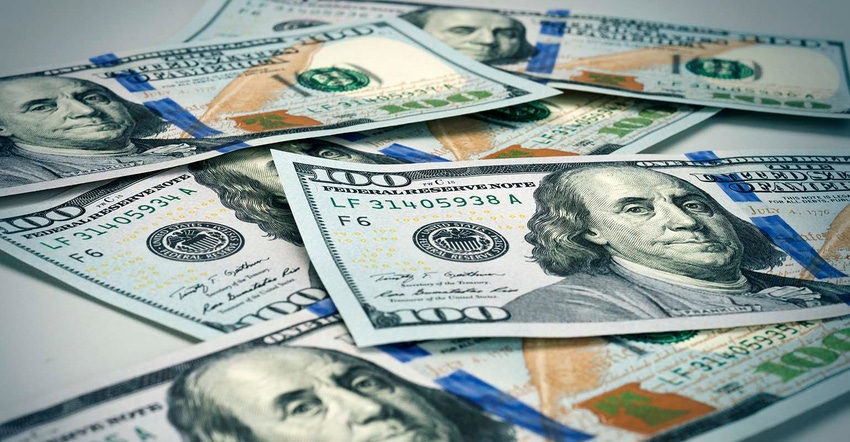GAO report finds fraud likely in CFAP payments
Approximately 4.4% of CFAP payments susceptible to fraud or improper payments.

During the pandemic, USDA through the Coronavirus Food Assistance Program provided producers $31 billion for various commodities. However, in reviewing a sampling of CFAP payments, the Government Accountability Office found that over half of those sampled did not provide full support for their payments and were “therefore potentially improper.”
Through CFAP, USDA paid producers $13.8 billion for field crops; $9.8 billion for livestock; $3.0 billion for dairy; and $4.4 billion for other commodities, such as fruits, tree nuts and vegetables. Of the total, $661.5 million—primarily for livestock and other commodities—went to high-income producers whose average annual adjusted gross income exceeded $900,000 over a 3-year period, GAO says.
The CARES Act – Coronavirus Aid, Relief and Economic Security Act - included a provision for GAO to monitor and report on the federal response to the COVID-19 pandemic. In addition, GAO was asked to review CFAP payments and FSA's implementation and oversight of CFAP.
GAO reviewed a nongeneralizable sample of 90 producers whose CFAP claims GAO considered to have risk factors for improper payments. Such factors include large claims for commodities for which the USDA agency that administered the program—the Farm Service Agency—has limited knowledge because the commodities are not typically eligible for FSA's farm programs. GAO found that over half of the producers (48 of 90) that GAO reviewed did not provide full support for their payments.
FSA generally calculated CFAP payments to producers using commodity-specific rates (e.g., cents per pound, dollars per head of cattle) multiplied by the amount of commodities produced; sold; or held in inventory on certain dates, depending on the type of agricultural commodity. FSA generally paid producers based on the claims in their CFAP applications regarding commodity ownership and other program requirements. Producers self-certified the claims (i.e., signed a statement that the information that they provided was true and correct), and FSA did not require producers to provide evidence for their claims before issuing payments. Instead, FSA planned to conduct post payment reviews and recovery audits.
Contrast to traditional farm bill programs, such as USDA’s Agriculture Risk Coverage and Price Loss Coverage, participants are paid based on records or conditions that USDA agencies must verify before issuing payments. According to a USDA document, CFAP was designed as a self-certification program to expedite payments to producers to help mitigate financial hardships associated with COVID-19.
As a further effort to ensure the integrity of USDA payments, the Business Center—which provides shared services across several USDA agencies—conducts reviews to identify, report, and reduce improper payments. GAO notes the Business Center reviewed CFAP 1 payments in fiscal year 2020 and CFAP 1 and CFAP 2 payments in fiscal year 2021 in accordance with payment integrity requirements in statute.
“USDA’s Business Center 2021 payment integrity review for CFAP estimated that CFAP had a significant improper payment rate for fiscal year 2020.23 Specifically, as part of a risk assessment, the Business Center estimated, according to errors that it found, that $449,871,216 (about 4.4%) of CFAP payments were improper and, thus, that the program is susceptible to significant improper payments,” GAO says. “Consequently, USDA will be required to estimate and report improper payments for any future payments in the program.”
GAO did note, “Although the existence of fraud risk factors does not necessarily indicate that fraud exists or will occur, these factors are often present when fraud does occur. Further, while not all improper payments are the result of fraudulent activity, they are indicators of fraud risk.”
Entities received an average CFAP payment of about $77,880 per entity. Of the various types of entities that producers may operate, general partnerships and joint ventures received among the largest average payments for CFAP, about $128,048 and $102,669, respectively, but some received CFAP payments totaling millions of dollars, GAO says.
GAO did suggest that the FSA administrator should conduct additional spot checks of CFAP payments and use a more risk-based approach to selecting producers for review. This approach could include focusing on producers of commodities not generally covered by other FSA programs and producers who received large payments.
About the Author(s)
You May Also Like




.png?width=300&auto=webp&quality=80&disable=upscale)
